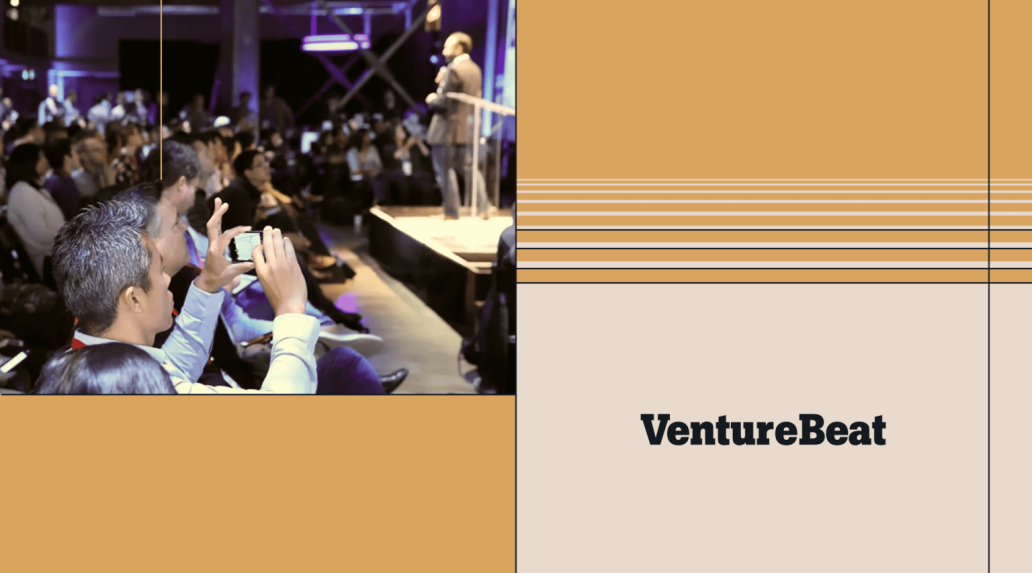The cost of legacy technology creeps up on you. Media organizations might not notice it until suddenly all the innovative ideas their teams come up with are greeted with a “No,” or at least a “Not right now.”
An editor might come forward with a new approach to digital storytelling that could increase the time audiences spend on a page, for example. It sounds great, but it’s a “No,” because the site’s existing infrastructure won’t easily integrate with the additional tools that would be required. The same goes for a reporter who pitches using AI to help explain the context behind top stories and feature reports.
Elsewhere, an audience development exec could come up with a powerful strategy to attract more subscribers. They get a “Not yet,” though, because the investment they are asking for needs to be allocated towards propping up a database that’s constantly breaking down.
Failing to recognize the problems of legacy technology means publishers risk falling behind competitors, fail to achieve their most important goals, and—most importantly—reduce their ability to innovate in ways that benefit their audiences and advertisers.
This post will:
- Provide a way to better understand legacy technology(or explain it to someone who doesn’t have a lot of technical savvy)
- Define what innovation means in the context of media and publishing.
- Outline the key areas where legacy technology blocks innovation
- Offer three examples of media organizations that have overcome these challenges and are innovating their way to greater success
- Suggest an action plan to get innovation back on track
What is legacy technology?
We all know what politicians and other leaders mean when they talk about the legacy they hope to leave behind. They’re thinking about how they’ll be remembered by those they served, and they’re usually hoping it will be based on achieving a positive, long-lasting impact.
Technology is similar in that the platforms and tools media organizations use can have an extensive track record of delivering on expectations. These are products and solutions that required significant investment, so organizations naturally want to get as much value out of them as possible.
Beyond a certain point, though, this becomes increasingly difficult for a variety of reasons:
- Features become obsolete and/or fail to deliver on user or customer expectations
- Business conditions evolve, creating needs in performance, scale, and other capabilities that the original products weren’t designed to offer
- Support options expire
Market research firm Gartner Inc. defines legacy technology as “an information system that may be based on outdated technologies, but is critical to day-to-day operations.” That explains why beyond costs, publishers and other organizations hang on to legacy technology so long: they wonder if they can really afford to risk moving to anything else.
On the frontlines, however, 45% of newsrooms say legacy technology is causing them challenges, from accessing content to having to switch between too many different tools. Turns out day-to-day operations aren’t working that well. That could make it even harder to move the business forward and innovate.
What innovation in the media sector means
Individual journalists may come up with innovative ways to write a lede, edit a video, or package a collection of stories. What most media organizations are looking for, though, is innovation as it’s understood by other industries: a way of taking new ideas and approaches that lead to new goods and services, or improvements on what they already offer.
Some publishers will be pursuing innovation in specific areas. A recent survey found they were evenly split in prioritizing how to scale extensions to their audience, monetize with and without social media, achieve contextual targeting, and more.
Ultimately, innovation should allow media organizations to do what they do best: nurturing human connection. The stories they tell can help people better understand their government, their communities, and their peers. They can inspire people to work more collaboratively to solve problems.
The greatest publishers simply make us feel less alone, a feat that requires constant innovation as the world becomes more digitally-oriented and technology-driven.
How legacy technology blocks media industry innovation
The longer you hold on to legacy technology, the more likely you’ll be spending time putting out fires instead of looking ahead to your audience’s future needs. This list is by no means exhaustive, but it points out a few of the reasons innovation efforts get put on the back-burner.
1. Slow workflows
Aging content management systems (CMSes) make it take editorial teams inordinately long to publish and manage content, even as the volumes they’re expected to produce and the channels they’re using to distribute it are growing. When basic functionality begins failing them, you’re going to see help desk tickets skyrocket.
2. Performance problems
Site and page load speeds matter. They can determine how long and how often audiences engage with your content, and how much they’re consuming. Audiences won’t wait around for long for slow or erratically-performing sites, and will become less likely to return with every bad experience.
3. Point product proliferation
Sometimes it seems easier to apply the tech equivalent of band-aids to legacy technology in the form of additional software and tools. The truth is you’re just going to add more complexity for your IT team to maintain, not to mention a lot of vendor relationships to manage.
4. Lost revenue
Advertisers expect and need to work with publishers who can accommodate specific targeting requirements, provide deep analytics, and ensure brand safety, among other areas. Antiquated systems can limit publishers’ ability to compete and win lucrative campaigns, which could also mean less spending on areas like events.
5. Increased security risks
Cybercriminals are constantly developing more sophisticated techniques to execute attacks and steal data. Even if legacy technology provides basic functionality, it could leave publishers unprotected from a range of threats.
Three media organizations that overcame legacy technology to focus on innovation
It’s easy to be so siloed within your own business that you don’t know how similar firms are grappling with challenges like legacy technology. Here are some examples of how to move modernization forward:
The Times

It may be Britain’s oldest daily newspaper, but The Times is taking a forward-looking approach to how it embraces digital-first journalism.
Like many publishers, The Times had been working with a CMS that did one thing well—manage its print operation—but made publishing on digital platforms difficult. This included the need to work across three to seven Google Docs just to publish one article. The team knew they needed something world-class, but there were concerns about compromising their front-end products.
Moving to WordPress VIP has allowed The Times to publish content 34% faster, with 62% fewer clicks. Just as important, The Times has been able to use its CMS as the foundation for a range of innovative digital experiences across its website, tablets, apps, and beyond.
Al Jazeera

Where The Times wasn’t getting what it needed from a single CMS, Al Jazeera was juggling too many. There were half a dozen CMSes that were getting bogged down with security issues which made rolling out new features difficult.
This not only affected day-to-day operations—it meant Al Jazeera couldn’t realize its vision of an innovative digital experience. The plan was to allow people using its app to compare its coverage with those of other outlets, including those coming from international newsrooms and translated from other languages, in order to see the news from multiple perspectives.
By adopting the WordPress VIP headless solution, Al Jazeera can create content once and publish it anywhere, personalize its news feed, and explore integrating user accounts to improve loyalty. These benefits are on top of lower total cost of ownership (TCO) and improved security. And instead of taking weeks to learn the tools they’re using, Al Jazeera is getting the team up to speed in an hour or two.
VentureBeat

Its journalists cover the world’s most innovative startups and technologies, but the team at VentureBeat must have occasionally felt like the proverbial cobbler’s children with no quality shoes of their own.
Not only were website response times reaching between 1,500 and 2,000 milliseconds, but software bugs were changing its CMS settings, which sometimes meant content wasn’t saved properly.
VentureBeat’s WordPress VIP migration has seen response times drop to about a tenth of what they were, and editors now have workflows they can depend upon. Just as important, though, VentureBeat’s tech team is now freed up to innovate in areas like ad tech, SEO, and its visual and user experience.
Tackle legacy technology with these action items
Getting yourself in a position to innovate doesn’t mean creating your own technology solutions. Publishers should be able to act like media companies, not tech companies.
Instead, use some of the rules of thumb from the case studies referenced above to develop your legacy technology action plan:
1. Audit and assess the extent of legacy technology problems
The VentureBeat team already knew some of the bugs that were causing people problems, and they itemized them. Don’t stop there, though. Work with trusted partners like WordPress VIP to conduct a more extensive code audit so you can get ahead of other potential challenges. This paves the way for a smoother migration process once you’re ready.
2. Treat procurement like an investigative reporting project
The biggest scoops usually come from editors and reporters putting considerable effort into background research, vetting and talking to multiple sources, and only then beginning their story. That’s not a bad way to choose the best tools to replace legacy technology. Al Jazeera, for instance, reviewed almost two dozen platforms and did a competitive analysis before opting for a headless architecture based on WordPress. This is especially important when you’re factoring in areas like scalability, security, and support.
3. Try out new platforms and tools as though they were cub reporters
Most newsrooms wouldn’t put a journalist they barely know on a big story. They often try them out on simpler assignments first to see if they have what it takes for larger ones. That’s how The Times approached WordPress VIP, testing it out in ancillary projects before making it core to their publishing workflow.
4. Augment your talent pool
Moving from legacy to modern tech may take some expertise you don’t have on hand today. The Times not only partnered with NewsPress but recruited some WordPress engineers and enlisted a WordPress VIP Gold Partner, Big Bite Creative, to accelerate development. VentureBeat did something similar, collaborating with WordPress VIP Featured Partner 10up to assist with its migration.
5. Aim for long-term flexibility and control
Even the most innovative companies find it hard to predict the future, so they try to make sure they’re ready for it. For Al Jazeera, choosing an open source platform meant they would own the code behind their publishing platform for the first time. That makes it easier to plan out their roadmap. Transcending legacy technology should always be about giving yourself more options.
If you want to be seen as an innovative publisher, there’s only one way—by turning your legacy technology issues into yesterday’s news.

Shane Schick, Founder—360 Magazine
Shane Schick is a longtime technology journalist serving business leaders ranging from CIOs and CMOs to CEOs. His work has appeared in Yahoo Finance, the Globe & Mail and many other publications. Shane is currently the founder of a customer experience design publication called 360 Magazine. He lives in Toronto.
